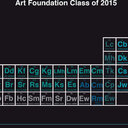Dose-response effects of woody and herbaceous forage plants on in vitro ruminal methane and ammonia formation, and their short-term palatability in lactating cows.
Հիմնաբառեր
Վերացական
Plant secondary compounds (PSC) are prevalent in many woody, temperate-climate plant species and play a crucial role in dietary attempts to mitigate methane emissions in ruminants. However, their application requires sufficient palatability and feeding value. In the present study, leaves from silver birch (Betula pendula), hazel (Corylus avellana), blackcurrant (Ribes nigrum), green grape vine (Vitis vinifera) and the herbs rosebay willow (Epilobium angustifolium) and wood avens (Geum urbanum) were tested in various doses with the Hohenheim gas test method in vitro and their short-term palatability in dairy cows. For the palatability experiment, the plants were pelleted with lucerne in different proportions to obtain the same phenol content, but realised contents differed from expected contents. The pellets were provided separately from a mixed basal ration (0.4 : 0.6) to each cow, in a randomised order, for 3 days per plant. All plants mitigated in vitro methane and ammonia formation, often in a linear dose response. These levels of effects differed among plants. Significant effects were observed at 100 (hazel, rosebay willow) to 400 g/kg of plant material. The test plants had a lower feeding value than the high-quality basal diet. This was indicated by in vitro organic matter digestibility, short-chain fatty acid formation and calculated contents of net energy of lactation. Simultaneously, the linear depression of ammonia formation indicated a dose-dependent increase of utilisable CP. Only blackcurrant and birch were less preferred to lucerne. However, this aversion subsided on day 3 of offer. The rosebay willow pellets had the highest phenol content but were not the least palatable. Accordingly, PSC may not be the main determinants of palatability for the plants tested. Plants did not differ significantly in their short-term effects on milk yield and composition, and all of the plants substantially reduced milk urea content. Overall, the results suggest that hazel and vine leaves, and rosebay willow and wood avens herbs should be tested for their potential to mitigate methane and N emissions in vivo.



